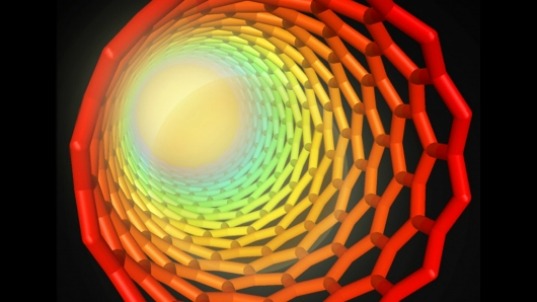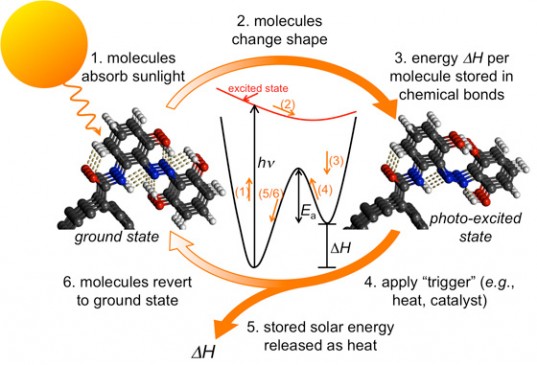Devices and systems for storing solar energy are thankfully becoming more and more common, but a team from MIT may be on the cusp of creating a solar battery made from carbon nanotubes that can be recharged constantly via exposure to the sun. The solar energy storage device absorbs the sun’s heat in a chemical form – instead of instantly converting it to energy, like a solar cell, it stores the heat in a heavily insulated container. By using a newly developed carbon nanotube compound called azobenzene, this ‘solar sponge’ allows the chemical material to be stored for long periods of time without any degradation.

The solar energy storage device absorbs the sun’s heat in a chemical form – instead of instantly converting it to energy, like a solar cell, it stores the heat in a heavily insulated container. By using a newly developed carbon nanotube compound called azobenzene, this ‘solar sponge’ allows the chemical material to be stored for long periods of time without any degradation.
Previous attempts at this method have required the use of ruthenium, which is an incredibly rare and expensive element. However, the new carbon nanotube technology would make the entire process much cheaper. This could mean the full-scale creation of solar batteries that are constantly recharging and can be used on a long-term basis.

By using azobenzene, Kolpak said devices could produce the same energy density as lithium-ion. With nanofabrication methods “you can control [the molecules’] interactions, increasing the amount of energy they can store and the length of time for which they can store it — and most importantly, you can control both independently.” Kolpak said. “I see this as the tip of the iceberg. We’re pretty jazzed up about it.”
The process, developed by MIT associate professor Jeffrey Grossman and postdoc Alexie Kolpak, has been published online in the journal Nano Letters.
Source: inhabitat
 Follow
Follow